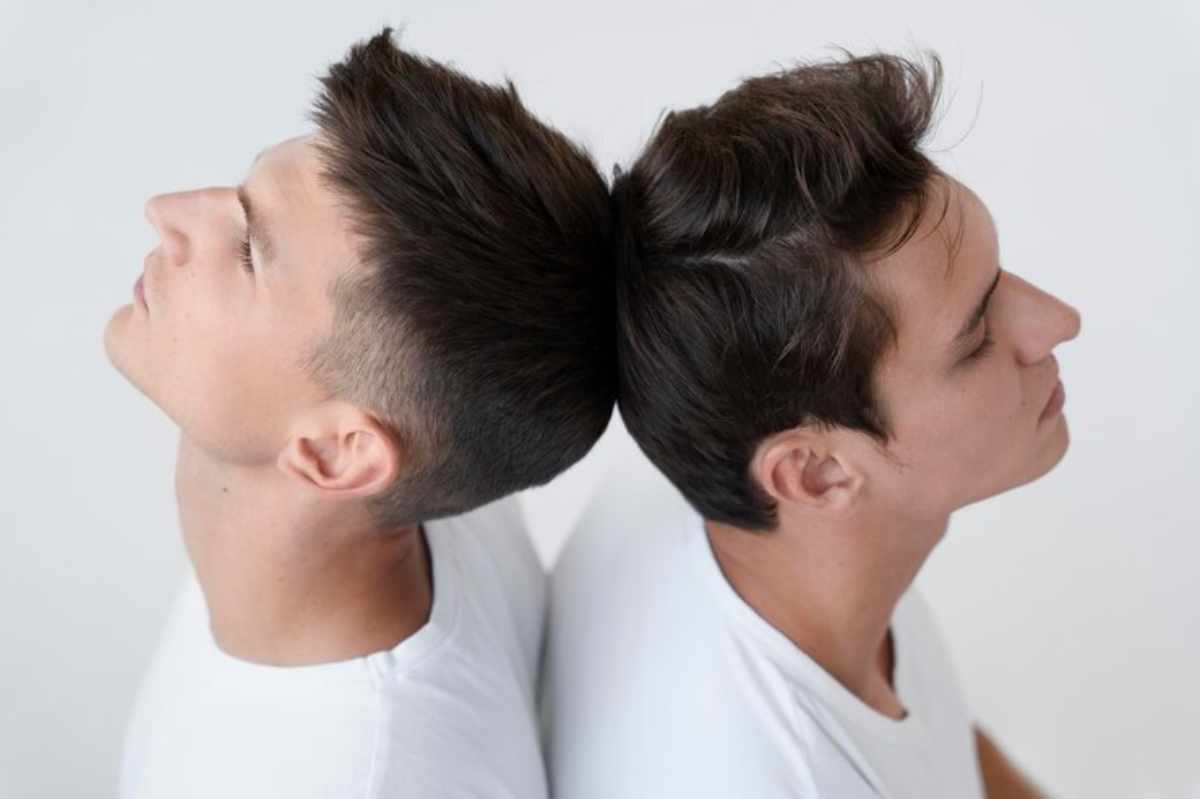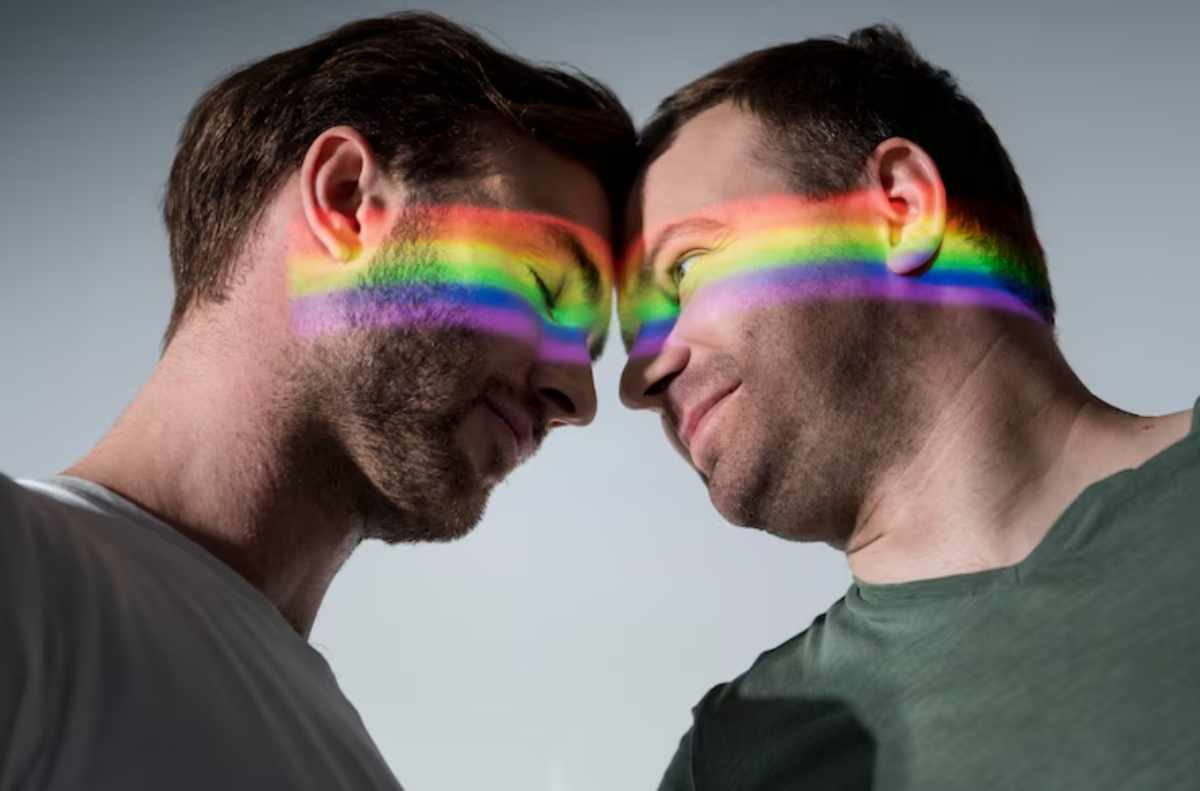The question “Which ear is the gay ear?” has often sparked curiosity and debate, particularly when it comes to the symbol’s meaning within the LGBTQ+ community. While some may still ask this question in jest or with a sense of curiosity, it carries a deeper history that intertwines with social and cultural contexts.
In this article, we will delve into the origins of this myth, its symbolic significance, and how it is understood today.

The Origins of the “Gay Ear” Myth
The phrase “Which ear is the gay ear?” is often associated with a historical Rumohr about ear piercings and their meanings within the gay community. Back in the 1970s and 1980s, it was said that if a man had a piercing in his left ear.
it signified that he was gay, while a piercing in the right ear was considered “heterosexual.” This assumption created confusion and was rooted in a time when symbols and codes were important for LGBTQ+ individuals to discreetly communicate their identity in a world that was not always accepted.
Cultural Influence and the Emergence of “The Gay Ear” Code
The connection between ear piercings and sexual orientation emerged during a time when the LGBTQ+ community had to adopt subtle ways of signalling their identity due to societal discrimination.
In many cases, symbols like the “gay ear” were used to discreetly indicate one’s sexual orientation, especially when public discussion about LGBTQ+ issues was limited.
However, the idea of the “gay ear” is far more complex than a simple trend of ear piercings. The myth about left vs. right ear piercings was also part of a broader cultural narrative that sought to define gender roles and sexual identities through physical markers.
The notion was amplified by pop culture during the 1980s, with celebrities, musicians, and even politicians sporting certain styles of piercings. It soon became a way for members of the LGBTQ+ community to communicate, even though the meaning could vary from one person to another.
Breaking Down the Myth
Despite its popularity in certain circles, there was never a consistent or universal agreement on the meaning behind “Which ear is the gay ear?” The myth has been largely debunked over the years.
The Left Ear vs. Right Ear Debate
The idea that the left ear signified homosexuality and the right ear symbolized heterosexuality was never grounded in reality. While some individuals in the LGBTQ+ community may have adhered to this idea in earlier years, the distinction has since become obsolete.
Today, many people wear piercings in either ear without them having any connection to sexual orientation.
One key reason the “gay ear” myth has been dismantled is that it oversimplifies and generalizes a diverse and complex community. Sexual orientation cannot be defined by an ear piercing, and the assumption that a piercing in one ear automatically denotes a person’s identity is problematic and limiting.
A Changing Cultural Landscape
As LGBTQ+ acceptance and visibility have grown over the past few decades, the idea of “gay ear” symbolism has become less significant. In today’s more open and inclusive environment, individuals are no longer confined to physical symbols like ear piercings to express their sexual orientation.
The LGBTQ+ community has increasingly moved away from such discreet markers, and the focus has shifted toward authentic expression and identity.
What Does Piercing Mean Today?
Today, ear piercings are seen as a form of self-expression rather than a coded symbol of sexuality. The idea of “Which ear is the gay ear?” no longer holds weight in contemporary society.
People of all orientations may choose to pierce their ears for various reasons, from personal preference to cultural significance or fashion trends.
The Rise of Gender-Neutral and Queer Fashion
In modern culture, the boundaries of gender-specific symbols like the “gay ear” have been blurred. More and more individuals, especially from the LGBTQ+ community, are embracing gender-neutral fashion and self-expression.
The choice to wear an ear piercing—or even multiple piercings—has become a personal decision rather than a social marker.
Many members of the LGBTQ+ community are using fashion and accessories to express their identity without adhering to outdated stereotypes. As a result, the symbolism tied to which ear a person wears their piercing has faded, and the focus has shifted to self-empowerment and individuality.
Piercings Across the LGBTQ+ Spectrum
It’s important to note that piercings, including those in the ears, are a form of self-expression for people across the sexual orientation spectrum. Whether someone identifies as gay, bisexual, queer, or straight, piercings are used to enhance personal style or cultural significance without the weight of outdated labels like the “gay ear.”
The Evolution of LGBTQ+ Symbols
While ear piercings may no longer serve as a prominent signifier within the LGBTQ+ community, other symbols have risen to prominence. The rainbow flag, for instance, has become an iconic representation of LGBTQ+ pride and unity. Additionally, once used as a symbol of oppression, The pink triangle is again used to represent empowerment.
The Role of the Pride Flag
The rainbow pride flag, first created in 1978 by artist Gilbert Baker, has far surpassed the “gay ear” in significance within the LGBTQ+ community. Today, it’s the most recognizable symbol of LGBTQ+ pride, celebrating the diversity of sexual orientations and gender identities.
This flag, along with other LGBTQ+ symbols, represents the progress and ongoing fight for equality, in contrast to the dated and now irrelevant concept of the “gay ear.”
Conclusion
The query of “Which ear is the gay ear?” may have once held meaning as a discreet symbol of sexual orientation, but it has since become an outdated myth. While ear piercings may have had some symbolic significance in the past, today, they are seen as a personal choice rather than a sexual identifier.
The LGBTQ+ community has evolved far beyond the limitations of physical symbols, embracing a broader approach to identity expression.
Today, individuals are free to wear piercings or adorn themselves however they choose, without the need for outdated labels. The focus is on embracing authentic self-expression and recognizing the diversity within the LGBTQ+ community.
The myth of the “gay ear” is just that—a myth with no real bearing on one’s sexual orientation.
Frequently Asked Questions (FAQs):
What does the “gay ear” myth mean?
The “gay ear” myth suggests that a piercing in the left ear signifies a gay man, while a piercing in the right ear indicates a heterosexual man. This concept was popularized in the 1970s and 1980s but is now considered an outdated and incorrect stereotype.
Does having an ear piercing indicate sexual orientation today?
No, ear piercings no longer serve as a sign of sexual orientation. Today, ear piercings are a form of personal expression, and anyone—regardless of their sexual orientation—can choose to wear them.
Why did the “gay ear” myth exist in the first place?
The myth arose during a time when LGBTQ+ individuals had to use subtle markers to communicate their sexual identity due to societal discrimination. The ear piercing was one such discreet symbol.
Is there any truth to the “gay ear” legend?
No, there is no factual basis for the “gay ear” myth. It was simply a cultural rumour with no consistent or universal meaning within the LGBTQ+ community.
What symbols are commonly used by the LGBTQ+ community today?
Today, the most recognized symbol of LGBTQ+ pride is the rainbow flag. Additional emblems, including the pink triangle and the pride heart, are significant representations of LGBTQ+ identity.











